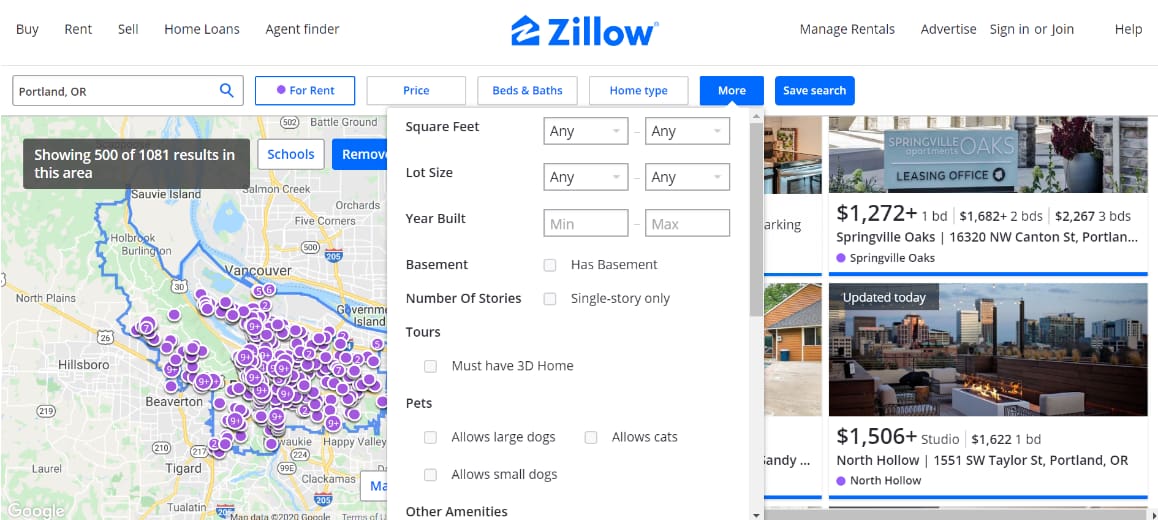The 5 Biggest Ways Technology Is Changing The Real Estate Industry For The Better
From keeping in touch with loved ones to collaborating with colleagues overseas, technology touches every aspect of our lives today. However, some industries have been adopting various technologies more slowly than others.
The global real estate industry, which is expected to generate a revenue of $4,263.7 billion by 2025, is one of the industries that hadn’t been too eager to try the latest tech entering the global market.
However, in recent years, an increasing number of realtors have been making use of digitalization and remote technologies. The current coronavirus pandemic is further fueling the digital revolution in the real estate sector.
Let’s take a look at the five biggest ways tech is changing the real estate industry for better.
1. Virtual 3D Property Tours
When buying a house, people want to take a closer look at the property. However, looking at multiple properties is not only physically demanding but also time-consuming. Most people don’t have enough time to look at houses. It is also a health risk in the current situation. That’s where virtual 3D property tours come in.
In recent years, virtual 360-degree tours have become increasingly commonplace. Most people take a first look at houses through these tours to shortlist the properties for actual viewing. Many realtors are also using video calls for initial showings.
You can find several online tools that allow you to create a 3D virtual tour of your property. Most virtual real estate tour software will use Virtual Reality (VR) technology to render a real estate plan into three-dimensional images and videos. Your clients can take the tour by using VR headsets. The viewers often feel like they are walking inside a house.
On the other hand, many real estate websites also use a rather simple virtual tour approach. Users can take the three-dimensional tour of the property on their laptops or smartphones navigating through the house using a mouse or a touch screen. You don’t need a VR device to view the property.

2. Online Marketplaces
With online marketplaces, real estate agents and brokers can get more exposure for their listings as most people prefer to view properties online before visiting. You can easily search for a house based on location, area, amenities, and pricing, among others, without leaving the comfort of your couch.
According to the 2019 NAR Profile of Home Buyers and Sellers report, 52% of the buyers found the home they purchased through the internet. The biggest benefit of the online real estate marketplace is speeding up the home-buying process.
Homebuyers can start their search without contacting a broker or driving around looking for a house. You can practically shortlist properties over the weekend and quickly make your buying decision.
For example, Zillow, one of the most popular online real estate marketplaces, lets you search a property based on type, location, price range, beds and baths, rent or sale, and several other layout specifications.

3. Smart Property Management
With the rise of new technology, the need for on-site property managers is also becoming a thing of the past. You can use a variety of remote tools and smart applications to check on your properties, keep track of maintenance, and make the necessary financial transactions.
For example, with a lease management tool, you can create customized lease agreements, vet your tenants, terminate or renew agreements, manage multiple tenant applications, and even sign the agreements digitally. It essentially eliminates the need to have any in-person interaction with your tenants.
Similarly, smart amenities allow a single person to effectively manage dozens of houses in a living community. These amenities include devices like smart lights, smart kitchen appliances, and smart locks, among other things.
As a property manager, you can monitor and control all these amenities with just a few clicks on your mobile phone or laptop. Furthermore, you can also save considerable water and energy consumption costs with such smart technologies.
With the use of smart technologies, the Duke Energy Center in Charlotte, NC, is able to reuse approximately 26 million gallons of harvested water each year. Tenants can also govern and reduce energy their own energy usage with the help of various smart technologies. Smart buildings like this are the future of an environmentally conscious and progressive real estate industry.
4. Highly Targeted Digital Marketing
As already mentioned, more than half the people start their property search online. As a result, an increasing number of people are using highly targeted digital marketing strategies to promote their business.
One of the most popular digital marketing strategies is email marketing. According to October 2019 MailChimp data, the real estate sector had an average open rate of 19.17% with an average click rate of 1.77%, making it a sought-after marketing channel.
Realtors, brokers, and property owners are using automated and data-driven email campaigns to successfully attract more customers. These campaigns often target prospects based on their past interactions with a brand, consumer profile, and online behaviour.
Similarly, the real estate industry is also taking full advantage of social media marketing. From sharing their success stories to unveiling their latest listings, real estate marketers are using different data-driven tactics to create buzz on social media.
For example, Facebook allows you to share listings, curate customer reviews, and interact with your prospects on its platform. Your existing customers can also recommend your business to their peers and friends. Positive customer reviews often add credibility to your real estate business.

5. E-Signing For Real Estate Transactions
Paperwork is one of the most daunting tasks associated with real estate transactions. However, you can now create, monitor, verify, and even sign most of the paperwork online or digitally using different technologies. You can find a variety of e-signing tools online.
Digital signatures are unique, just like their non-digital counterparts. Most e-signature applications rely on a technology called Public Key Infrastructure (PKI). Using PKI, the software creates two keys, one private and one public. The person signing the document holds the private key.
This key is used to create an electronic signature to sign digital documents. The signature is nothing but encrypted data, which is also time-stamped. If any changes are made to the document after signing it, the signature automatically becomes invalid.
Thus, e-signing is one of the most secure ways of signing paperwork. However, you will need to check the local and state laws to see the circumstances under which the e-signatures are considered valid. You will also need to decide whether or not you want to use e-signing for high-risk transactions.
Conclusion
As you can see, the above five technologies are playing a critical role in transforming the real estate sector. If your real estate firm hasn’t invested in one of these technologies, now is the time to take that leap as new technologies will keep fueling the growth of your business. Hopefully, learning about these technologies will help you make an informed decision. Which technology would you like to start using first? Tell us about your real estate tech experience in the comments section below.









